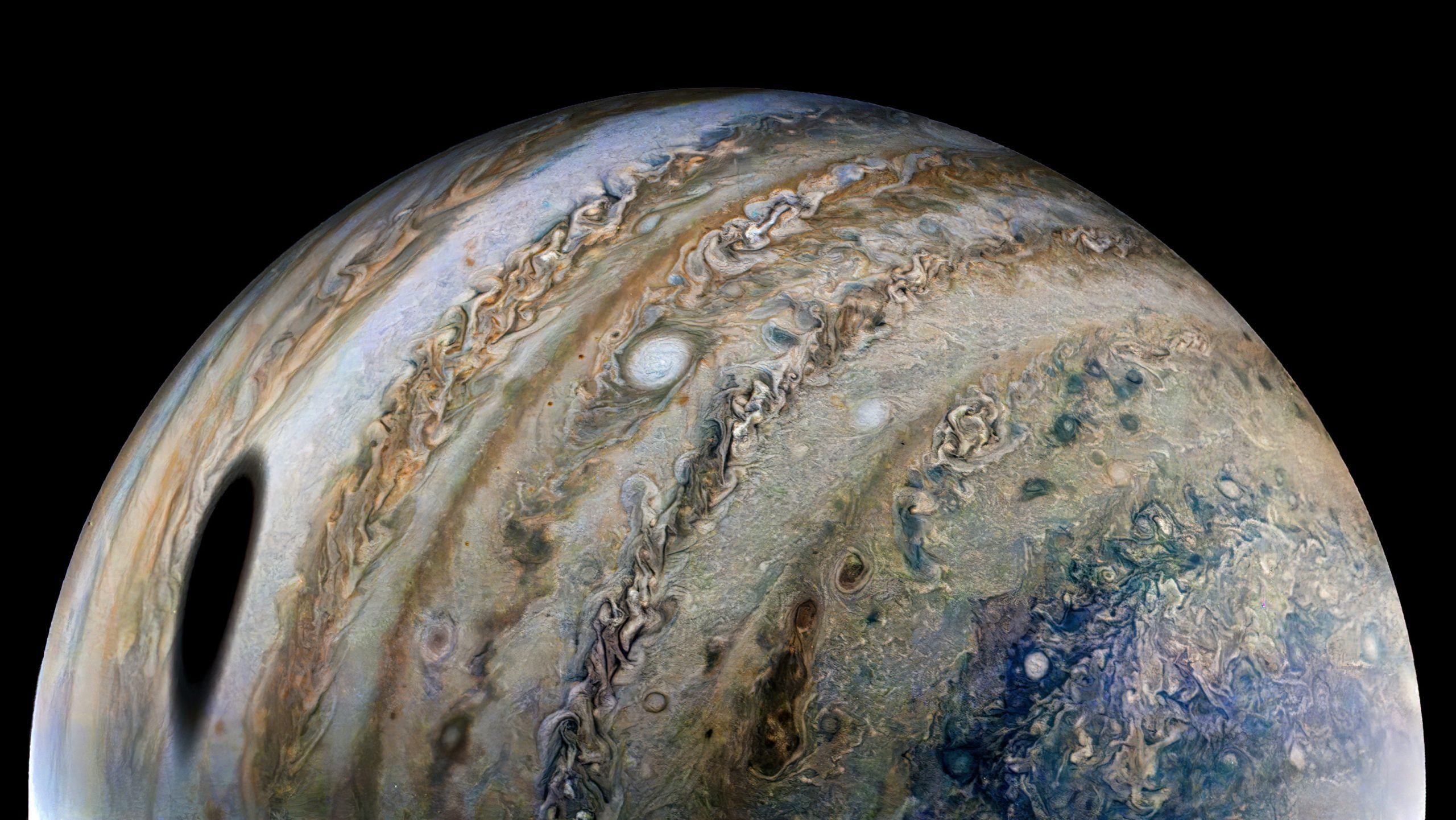Gambar 1. Ilmuwan warga Thomas Thomopoulos menciptakan gambar dengan warna yang disempurnakan ini menggunakan data mentah dari instrumen JunoCam. Pada saat gambar mentah diambil, pesawat ruang angkasa Juno berada sekitar 44.000 mil (71.000 kilometer) di atas puncak awan Jupiter, pada garis lintang sekitar 55 derajat Selatan, dan 15 kali lebih dekat dari Ganymede, yaitu sekitar 666.000 mil (1,1 juta kilometer) mengorbit) jauh dari Jupiter. Sumber: NASA/JPL-Caltech/SwRI/MSSS, pemrosesan gambar oleh Thomas Thomopoulos © CC BY
Jupiter during the mission’s 40th close pass by the giant planet on February 25, 2022. The large, dark shadow on the left side of the image was cast by Jupiter’s moon Ganymede.
Citizen scientist Thomas Thomopoulos created this enhanced-color image using raw data from the JunoCam instrument (Figure 1). At the time the raw image was taken, the Juno spacecraft was about 44,000 miles (71,000 kilometers) above Jupiter’s cloud tops, at a latitude of about 55 degrees south, and 15 times closer than Ganymede, which orbits about 666,000 miles (1.1 million kilometers) away from Jupiter.
An observer at Jupiter’s cloud tops within the oval shadow would experience a total eclipse of the Sun. Total eclipses are more common on Jupiter than Earth for several reasons. Jupiter has four major moons (Galilean satellites) that often pass between Jupiter and the Sun: in seven days, Ganymede transits once; Europa, twice; and Io, four times. And since Jupiter’s moons orbit in a plane close to Jupiter’s orbital plane, the moon shadows are often cast upon the planet.

Figure 2. Illustration of the approximate geometry of the Ganymede’s shadow projected onto a globe of Jupiter.
Credit: NASA/JPL-Caltech/SwRI/MSSS, Image processing by Brian Swift © CC BY
JunoCam captured this image from very close to Jupiter, making Ganymede’s shadow appear especially large. Figure 2, created by citizen scientist Brian Swift using JunoCam data, illustrates the approximate geometry of the visible area, projected onto a globe of Jupiter.
JunoCam’s raw images are available for the public to peruse and process into image products at https://missionjuno.swri.edu/junocam/processing.
Jupiter is the largest planet in the Solar System and the fifth planet from the Sun. It is a gas giant with a mass that is more than two and a half times that of all the other planets in the Solar System combined, but is only about one-thousandth the mass of the Sun. Jupiter, behind the Moon and Venus, is the third brightest natural object in the Earth’s night sky, and it has been noticed since prehistoric times. It was named after Jupiter, the Roman god and king of the gods.
Ganymede, a satellite of the planet Jupiter, is the largest and most massive of the Solar System’s moons. It is the ninth-biggest object in the Solar System (including the Sun) and the largest without a significant atmosphere. It has a diameter of 5,268 kilometers (3,273 miles), making it 26 percent larger by volume than Mercury, but it is only 45 percent as massive.

“Ninja twitter bersertifikat. Ahli internet. Penggemar budaya pop hardcore. Baconaholic.”
You may also like
-
Aturan matematika ditemukan di balik distribusi neuron di otak kita
-
Para ilmuwan menemukan penjelasan untuk lubang gravitasi raksasa di Samudra Hindia
-
Peta baru yang akurat dari semua materi di alam semesta dirilis
-
Para ilmuwan mengatakan sepasang bintang yang sangat langka berperilaku sangat ‘aneh’
-
Lima Angsa Tewas Setelah Terbang Ke Saluran Listrik Hinkley | Berita Inggris

